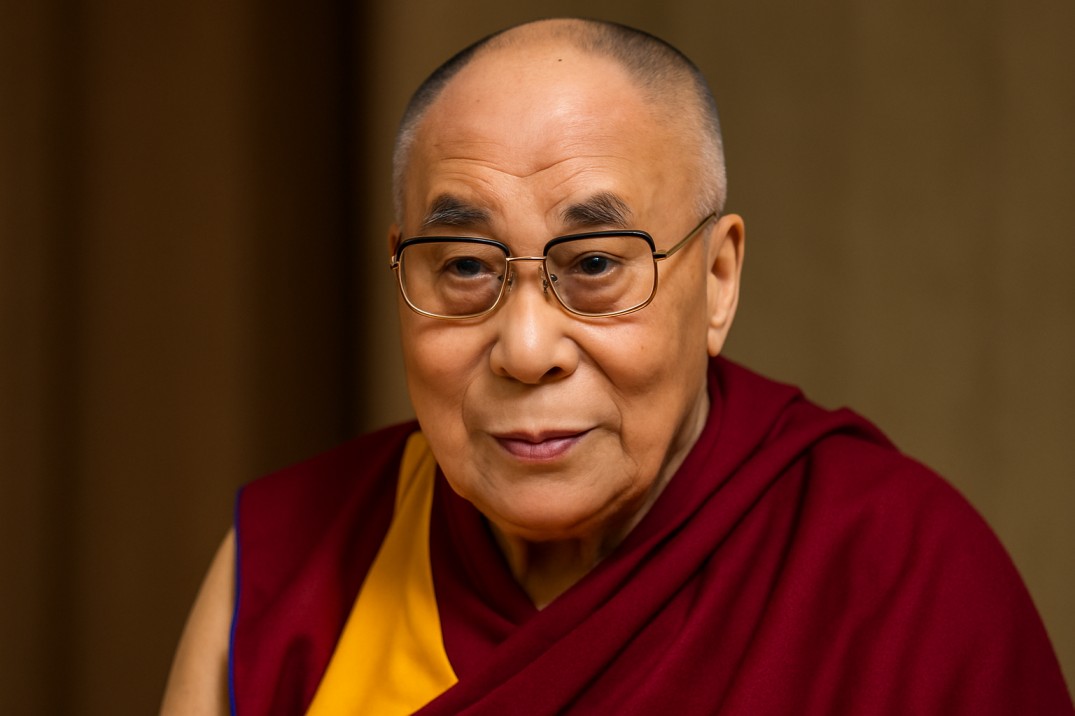By IJ-Reportika | July 4, 2025
In a historic and resolute statement dated July 2, 2025, His Holiness the 14th Dalai Lama has officially affirmed the continuation of the institution of the Dalai Lama, dispelling speculations and confirming that the sacred lineage will not end with him. Translated from Tibetan and addressed to Tibetans inside and outside Tibet, as well as to followers of Tibetan Buddhism worldwide, the statement reasserts that the future reincarnation of the Dalai Lama will be recognized solely by the Gaden Phodrang Trust—the official office of the Dalai Lama—without interference from any external authority.
This announcement, deeply rooted in Tibetan spiritual tradition, is also a bold political message aimed at China, which has long sought to control the religious succession process in Tibet. Beijing’s plans to name its own successor to the Dalai Lama—effectively creating a “puppet Lama”—have been widely criticized as a move to erode Tibetan identity and legitimize Chinese control over the region.
A Legacy of Spiritual Leadership and Exile
The Dalai Lama has been the spiritual leader of Tibet and a global symbol of nonviolent resistance against oppression for over six decades. Born Tenzin Gyatso in 1935, he was recognized as the 14th Dalai Lama at just two years old. In 1950, shortly after the People’s Liberation Army invaded Tibet, the 15-year-old Dalai Lama assumed full political power as head of state in a desperate attempt to negotiate with China and preserve Tibet’s autonomy.
But by 1959, following a failed uprising against Chinese rule, he was forced to flee to India, where he established the Tibetan Government in Exile in Dharamshala. Since then, he has tirelessly advocated for the rights of the Tibetan people, garnering international support and even receiving the Nobel Peace Prize in 1989.
China’s Attempt to Rewrite Tibetan Buddhism
The statement also indirectly addresses one of the most controversial chapters in Tibet’s modern history—the case of the Panchen Lama. In 1995, the Dalai Lama recognized a six-year-old boy, Gedhun Choekyi Nyima, as the 11th Panchen Lama, the second-highest spiritual authority in Tibetan Buddhism. Just days later, the child and his family were abducted by Chinese authorities and have not been seen since. In his place, Beijing installed its own candidate, widely rejected by Tibetans as a political impostor.
This pattern of interference is what the Dalai Lama’s new statement seeks to forestall. “The Gaden Phodrang Trust has sole authority to recognize the future reincarnation; no one else has any such authority to interfere in this matter,” the statement asserts unequivocally.
A Future Rooted in Tradition
The Dalai Lama revealed that over the past 14 years, numerous appeals from Tibetans—both in exile and inside Chinese-occupied Tibet—as well as from Buddhist communities across Asia, have urged him to ensure the continuation of the Dalai Lama lineage. This strong collective voice appears to have shaped his final decision.
In doing so, he reaffirmed a process first outlined in a 2011 statement, in which he said that the recognition of any future Dalai Lama must adhere strictly to traditional practices, including consultations with high Lamas of all Tibetan Buddhist traditions and oath-bound Dharma Protectors—divine guardians inseparable from the Dalai Lama’s spiritual lineage.
Global Stakes in a Spiritual Succession
The question of the Dalai Lama’s succession is not merely religious; it carries deep geopolitical implications. For China, controlling the next Dalai Lama would be a major symbolic victory in its campaign to legitimize its rule over Tibet. For the Tibetan people and their supporters around the world, the true successor must be rooted in centuries-old spiritual practices, not political manipulation.
By reaffirming the institution of the Dalai Lama and laying down strict guidelines for succession, His Holiness has made it clear that neither his legacy nor the Tibetan people’s struggle for identity and freedom will be erased.
As the Dalai Lama turns 90 in the coming days, his decision offers not just spiritual continuity but a renewed sense of resistance to cultural subjugation. The battle for Tibet’s soul is far from over—but the flame of hope continues to burn.
IJ-Reportika will continue to monitor developments related to Tibet, religious freedom, and geopolitical influence in the Himalayan region.




